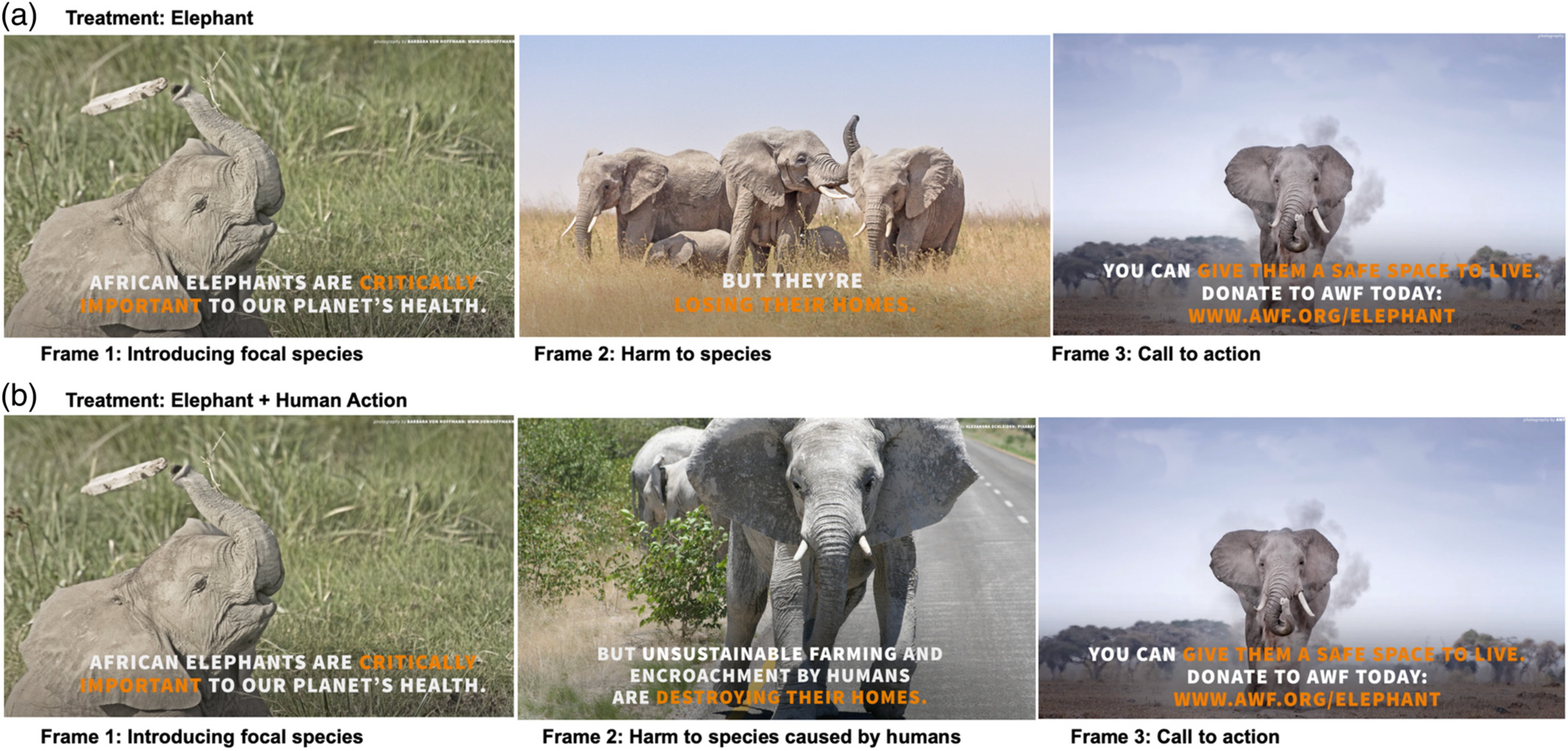
People are more likely to click through to wildlife conservation websites when Facebook ad stories feature less used species such as Wild Dogs - especially when they emphasise the adverse impacts of human activity such as habitat loss - than more popular, iconic species like Elephants. However, clicks don’t necessarily equal donations.
This is the finding from new behavioural research led by Dr Ganga Shreedhar (London School of Economics and Political Science), out now in Conservation, Science and Practice.
The aim of this study was to evaluate the behavioural impact of storytelling in Facebook advertisements on engagement with and donations to wildlife causes. Wildlife conservation organisations increasingly use storytelling to increase awareness and raise donations, using platforms such as Facebook to target a wide audience in a dynamic way. Apart from choosing what species to portray in ads, social media campaigns have also tried to make ad stories more engaging by explaining the human drivers of wildlife loss. Past studies show that directly linking the risk of harm to animals to the behaviours of humans can instigate concern and anger, also known as the 'outrage effect'.
Four treatment videos were designed: two featured a widely used iconic, flagship species – the African Elephant, with one video depicting the link between negative human action and harm, and the other did not; the other two videos featured a Wild dog, with one featuring negative human action and the other without.
The author used Facebook A/B split testing – which randomly assigns one ad from an ad set to a users’ feed – from 3 April 2019 to 10 April 2019 to reach over 120,000 users.
The author found that when an Elephant – an iconic, flagship species that organisations traditionally rely on – are used as the lead character, both engagement and impressions were lower than when wild dog was used. When a wild dog was the lead character, engagement remained higher (especially when linked to human action. Interestingly, older male users were more attentive to wild dog stories, whereas older female users spent more time watching elephant stories. This shows that wildlife organisations could diversify their campaigns by telling stories about how humans are impacting a wider array of lesser-known species, and by targeting their ads.
However, the study also showed that Facebook clicks don’t equal donations, raising further questions about how to convert online engagement into behaviour that is more consequential for organisations, and more broadly the impact of Facebook ads on real behaviours
Dr Ganga Shreedhar said: "The article confirms that storytelling – by choosing lesser-known yet attractive protagonist species and plots about how human activity is negatively impacting nature – can aid organisations increase engagement with wildlife conservation causes. This can be because people are drawn to novel stimuli and human-centred stories on social media. However, merely getting people to engage on Facebook via ads is unlikely to help you raise donations. Using the platform for more targeted storytelling to foster deliberative and consequential engagement would be crucial to move forward."
Behind the story
Shreedhar, G. (2021). Evaluating the impact of storytelling in Facebook advertisements on wildlife conservation engagement: Lessons and challenges. Conservation Science and Practice, e534. https://doi.org/10.1111/csp2.534